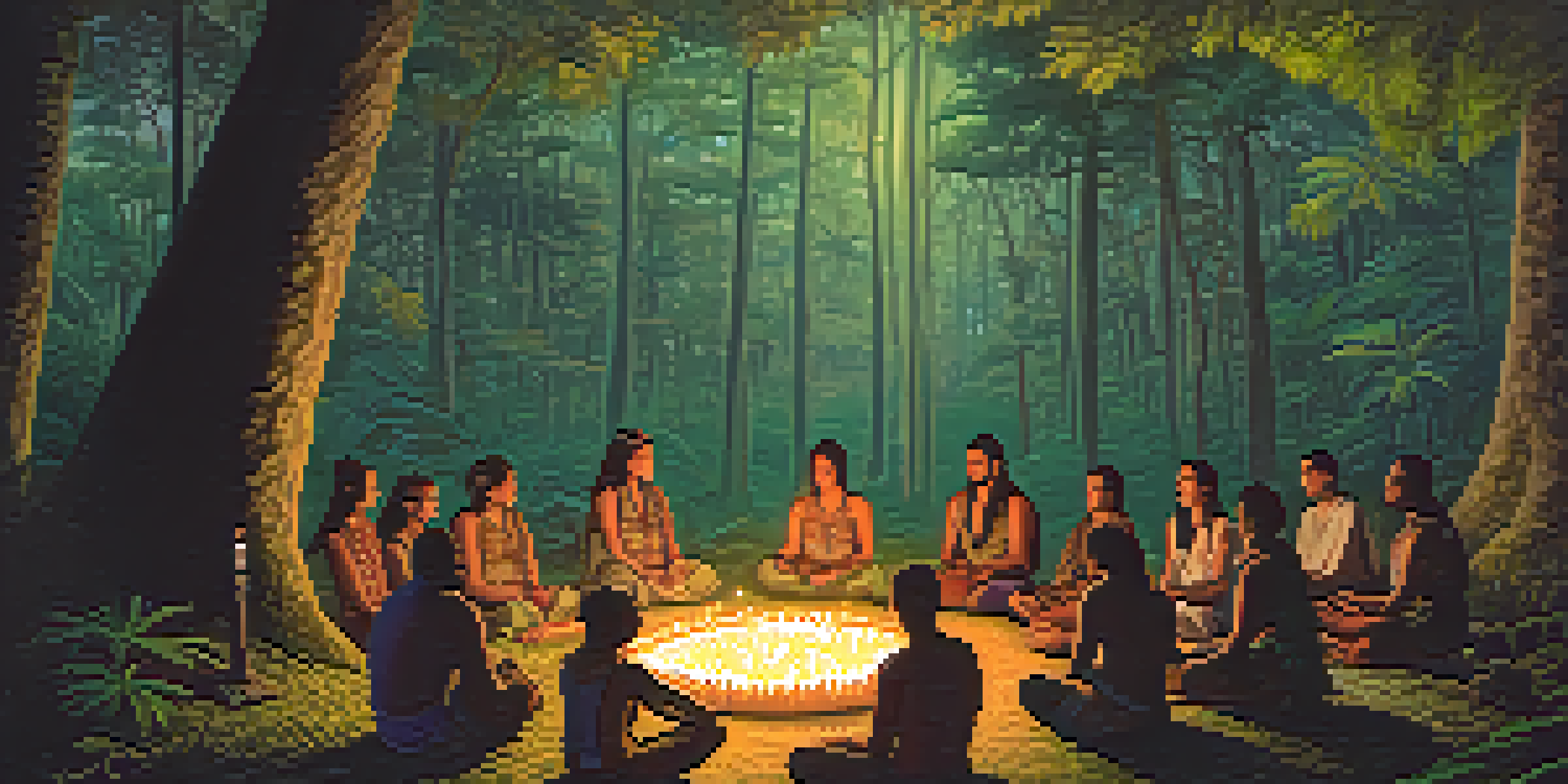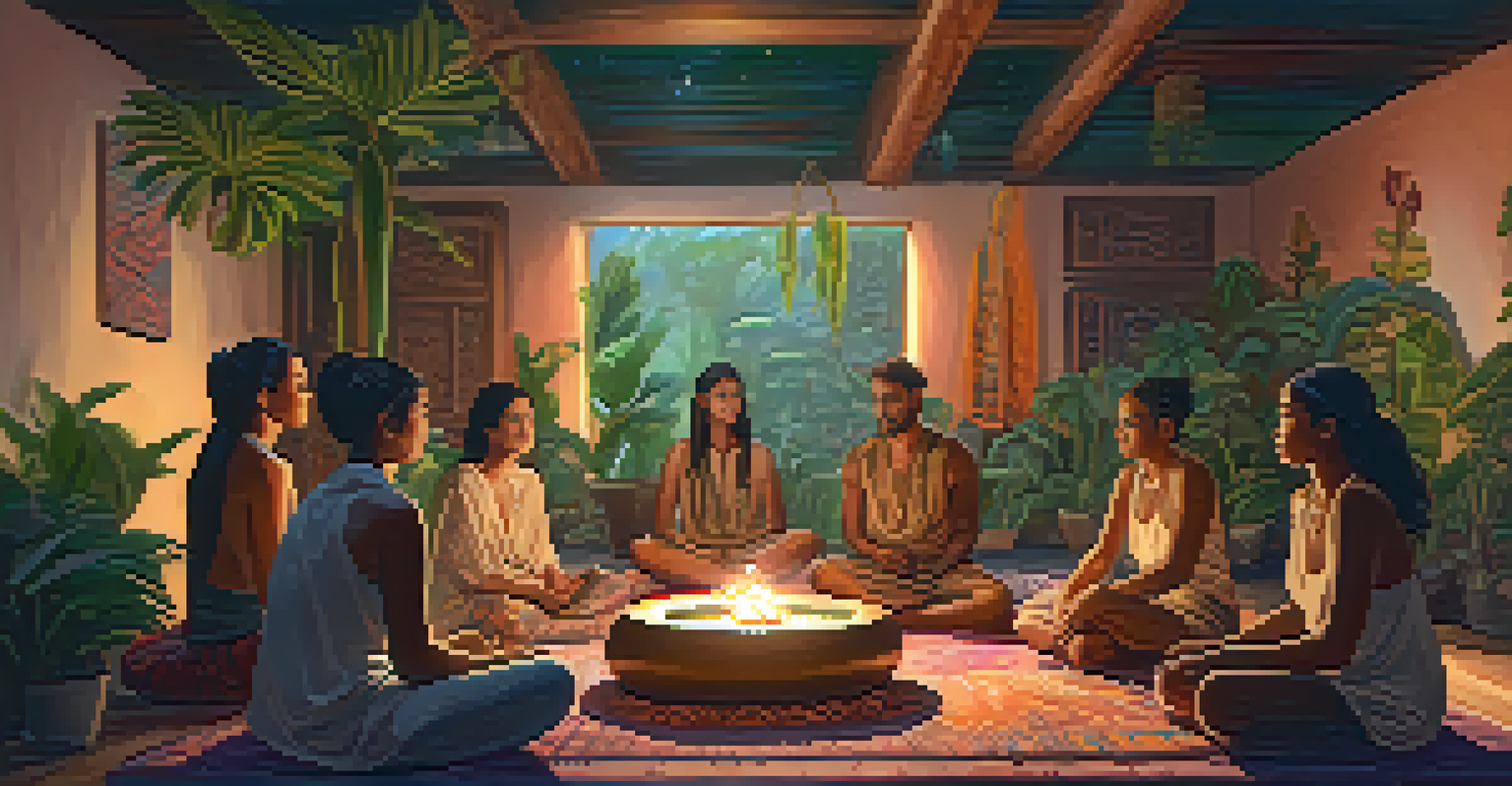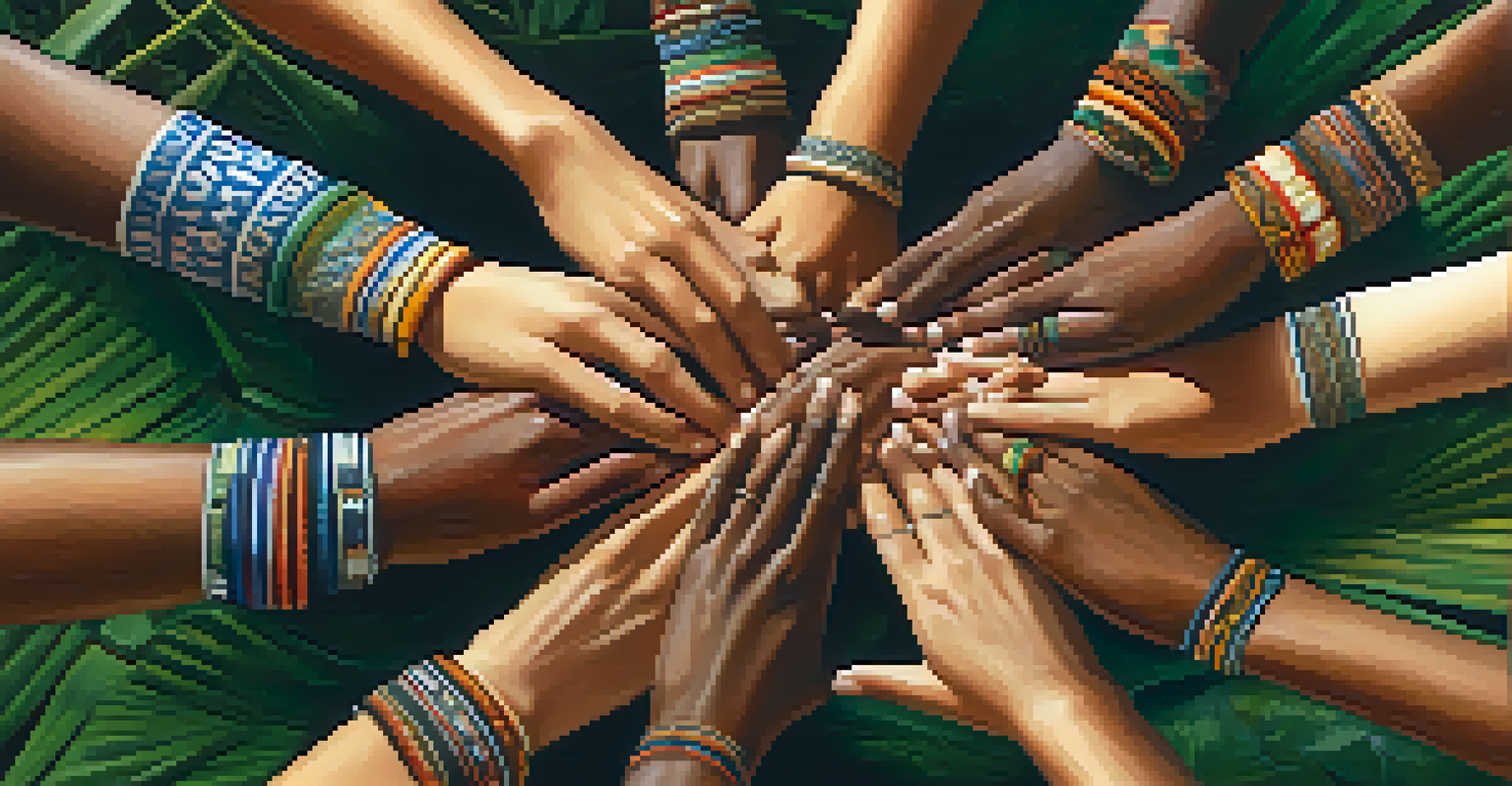Community Healing: Ayahuasca’s Role in Group Dynamics

Understanding Ayahuasca and Its Cultural Significance
Ayahuasca is a traditional Amazonian brew made from the Banisteriopsis caapi vine and the Psychotria viridis leaf. It has been used for centuries by Indigenous communities for spiritual and healing purposes. The brew is known for its psychoactive properties, primarily due to the presence of DMT, which facilitates profound introspective journeys.
The greatest discovery of my generation is that a human being can alter his life by altering his attitude.
In many cultures, the use of ayahuasca is not just a personal experience but a communal one. Ceremonies often involve groups, where participants share their journeys and insights, fostering a sense of connection and understanding. This collective approach is vital, as it mirrors the interconnectedness of life itself and emphasizes healing as a shared experience.
As Western interest in ayahuasca grows, more people are seeking these group ceremonies, hoping to tap into the collective energy and wisdom that arises. Understanding its cultural roots helps participants appreciate the depth of this experience, setting a tone of respect and reverence.
The Role of Group Dynamics in Healing Processes
Group dynamics refer to how people interact and behave in a group setting. In the context of ayahuasca ceremonies, these dynamics can significantly influence individual experiences. When participants come together with open hearts and minds, the energy can amplify healing, making it a powerful catalyst for personal and collective growth.

Sharing stories within the group can create a profound sense of community, allowing individuals to feel less isolated in their struggles. This collective sharing creates a safe space where vulnerability is welcomed, fostering trust and empathy among participants. As stories unfold, participants often find reflections of their own experiences, deepening their understanding of themselves and one another.
Ayahuasca and Community Connection
Ayahuasca ceremonies emphasize the importance of shared experiences, fostering a deep sense of community and collective healing.
Moreover, the group setting allows for real-time feedback and support, which can be instrumental in processing the often intense emotions that arise during an ayahuasca journey. This supportive environment encourages healing not just on a personal level, but also as a community united in its quest for understanding and transformation.
Experiencing Shared Vulnerability and Empathy
One of the most powerful aspects of ayahuasca ceremonies is the shared vulnerability that participants experience. When individuals open up about their fears, traumas, and aspirations, it fosters a deep sense of empathy among the group. This shared space allows participants to feel seen and heard, which is crucial for emotional healing.
We are not human beings having a spiritual experience; we are spiritual beings having a human experience.
As participants navigate their inner landscapes together, they often find common threads in their stories. This realization not only strengthens bonds but also helps individuals recognize that they are not alone in their struggles. Such shared experiences can lead to a profound sense of belonging, which many people are yearning for in today's fast-paced world.
Additionally, witnessing others' vulnerabilities can be equally transformative. It encourages individuals to confront their own feelings and provides the motivation to embrace their healing journeys. This cycle of support and empathy can create a positive feedback loop that enhances the healing process for everyone involved.
The Healing Power of Collective Intention
Collective intention refers to the shared focus of a group towards common goals or outcomes. In ayahuasca ceremonies, when participants set intentions together, the energy created can be incredibly powerful. This shared focus can enhance individual journeys, as the group’s intentions amplify the healing energies present during the ceremony.
When everyone in the group aligns their intentions, it creates a heightened sense of purpose. Participants often report feeling a strong connection to each other's experiences, which can deepen their own insights. This interconnectedness reinforces the idea that healing is not just an individual journey, but a communal one, where each person's growth contributes to the group's overall well-being.
The Power of Collective Intention
Setting intentions as a group enhances individual healing journeys, reinforcing the idea that growth is a communal process.
Moreover, setting intentions collectively can help guide the ceremony, allowing participants to navigate their experiences with clarity and focus. This shared commitment to healing creates an atmosphere of support that can be transformative, reinforcing the idea that together, they are stronger in their quest for understanding and healing.
Integration: Bridging Ceremony and Daily Life
The integration phase following an ayahuasca ceremony is crucial for translating insights gained into everyday life. This is where the group's role becomes even more significant, as participants often gather to discuss their experiences and support one another in the integration process. Sharing insights helps reinforce lessons learned during the ceremony and provides a platform for continued growth.
Integration circles can help participants process their experiences collectively, fostering a sense of accountability and encouragement. This communal support can be essential in navigating the challenges that arise when returning to daily life. Participants can share coping strategies, new perspectives, and even setbacks, allowing for a rich exchange of ideas and support.
Additionally, these integration sessions can strengthen the bonds formed during the ceremony, creating lasting friendships and support networks. This ongoing connection reinforces the idea that healing is not a solitary journey, but one that benefits from community and shared experiences.
Challenges and Considerations for Group Healing
While group healing through ayahuasca can be profoundly beneficial, it also comes with challenges. The intense emotions and experiences can sometimes lead to conflict within the group, especially if individuals feel triggered by others' journeys. It's essential to approach these situations with compassion and understanding, recognizing that everyone's healing process is unique.
Facilitators play a crucial role in navigating these dynamics, ensuring a safe environment for all participants. They can help mediate conflicts and guide discussions, allowing for a smoother integration process. Establishing ground rules for communication can also help mitigate misunderstandings and promote a supportive atmosphere.
Integration Supports Lasting Change
The integration phase after ayahuasca ceremonies is crucial for translating insights into daily life, supported by continued communal sharing.
Moreover, it's important for participants to be aware of their own emotional triggers and be prepared to support one another. Building a strong foundation of trust and respect within the group can help mitigate these challenges, ensuring that the focus remains on healing and growth.
The Future of Community Healing Through Ayahuasca
As interest in ayahuasca continues to rise, the potential for community healing becomes even more significant. More people are recognizing the importance of shared experiences in their healing journeys, leading to a growing demand for group ceremonies. This shift highlights a desire for connection and collective healing in an increasingly isolating world.
Future developments may focus on integrating traditional practices with modern therapeutic approaches, creating hybrid experiences that honor both the ancient wisdom and contemporary understanding of mental health. This blending could lead to more structured support systems, ensuring that participants not only experience the healing journey but also have the tools to integrate their insights into their lives.

Ultimately, the future of community healing through ayahuasca holds immense potential. By fostering connections and emphasizing the importance of shared healing, we can create a more compassionate world, where individuals support one another on their journeys toward well-being.